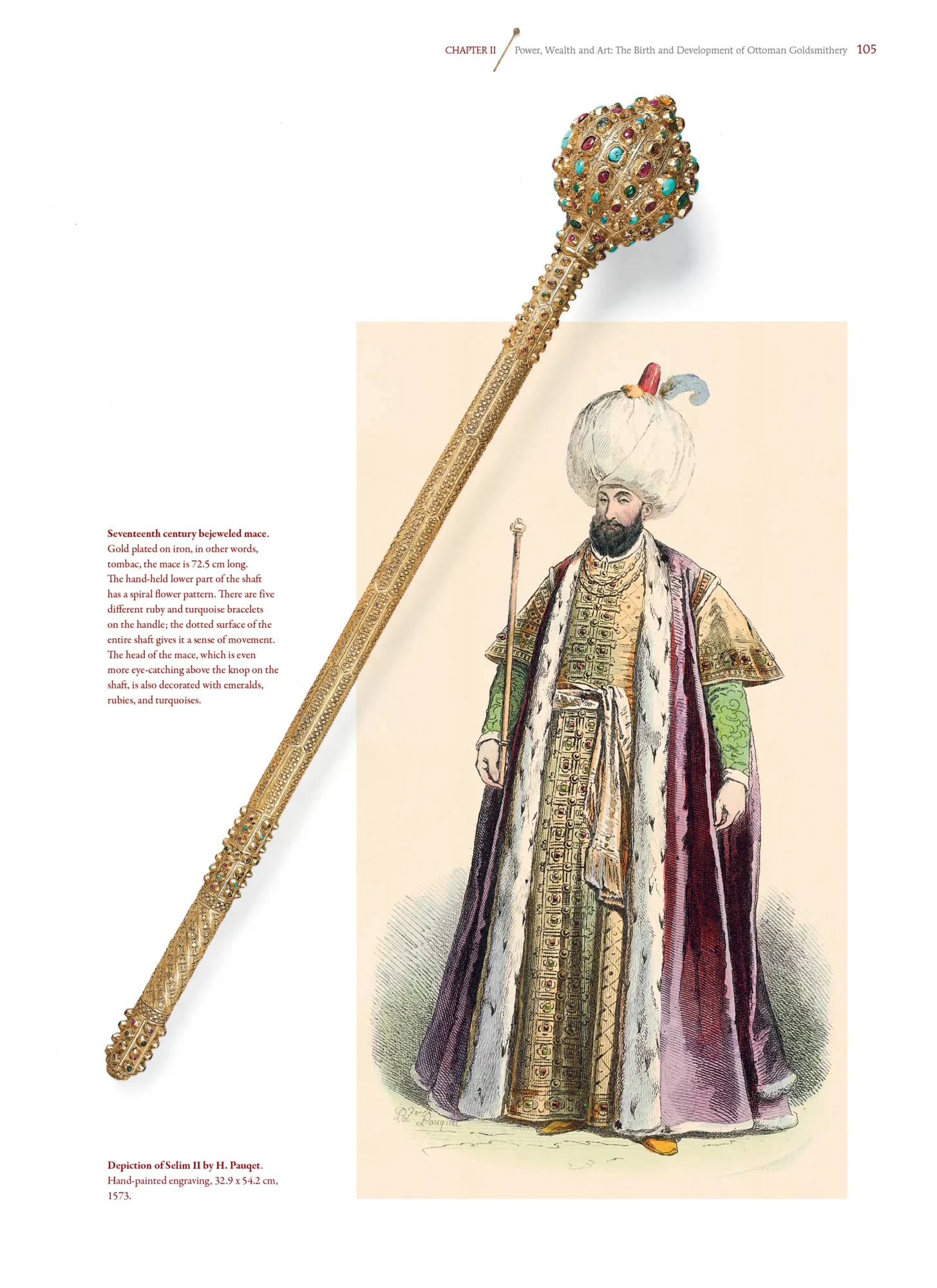SEVENTEENTH CENTURY BEJEWELED MACE
Gold plated on iron, in other words, tombac, the mace is 72.5 cm long. The hand-held lower part of the shaft has a spiral flower pattern. There are five different ruby and turquoise bracelets on the handle; the dotted surface of the entire shaft gives it a sense of movement. The head of the mace, which is even more eye-catching above the knop on the shaft, is also decorated with emeralds, rubies, and turquoises.
It is known that starting with such early dates as the 15th and 16th centuries, Ottomans benefited from the art of goldsmithery for arms (swords, yatagans, knives, daggers, cutlasses, rapiers, axes, pistols, rifles), armor, harnesses, stable gear and that court goldsmiths considered, apart from the usual valuable objects, making the hilts and stocks of rifles, pistols and swords or ornamenting these arms with precious metals and precious stones as part of their profession.
Towards the end of the 18th century, some Armenian masters also specialized in the ornamentation of arms. Goldsmith Kaplanoğlu working on the production and embellishment of status symbols like harnesses, saddles, stirrups for the court had also mastered the adornment of certain types of arms. A book of accounts signed “Goldsmith Kaplanoğlu” –he might be Rûm or Hay-Horom (although Armenian, the Hay-Horoms are a group adopting the religious rituals of the Rûm Orthodox Church)– indicates that besides repairing pistols and doing jewelry work with silver and gold gilding, Kaplanoğlu also made the silver and gold embellishment of weapons like cutlasses, maces and scimitars. The presence of only cutlasses, maces and scimitars in goldsmith Kaplanoğlu’s book might be the indication that more bejeweled arms like swords and dagger were made by the Duzians in the Imperial Mint workshops.

